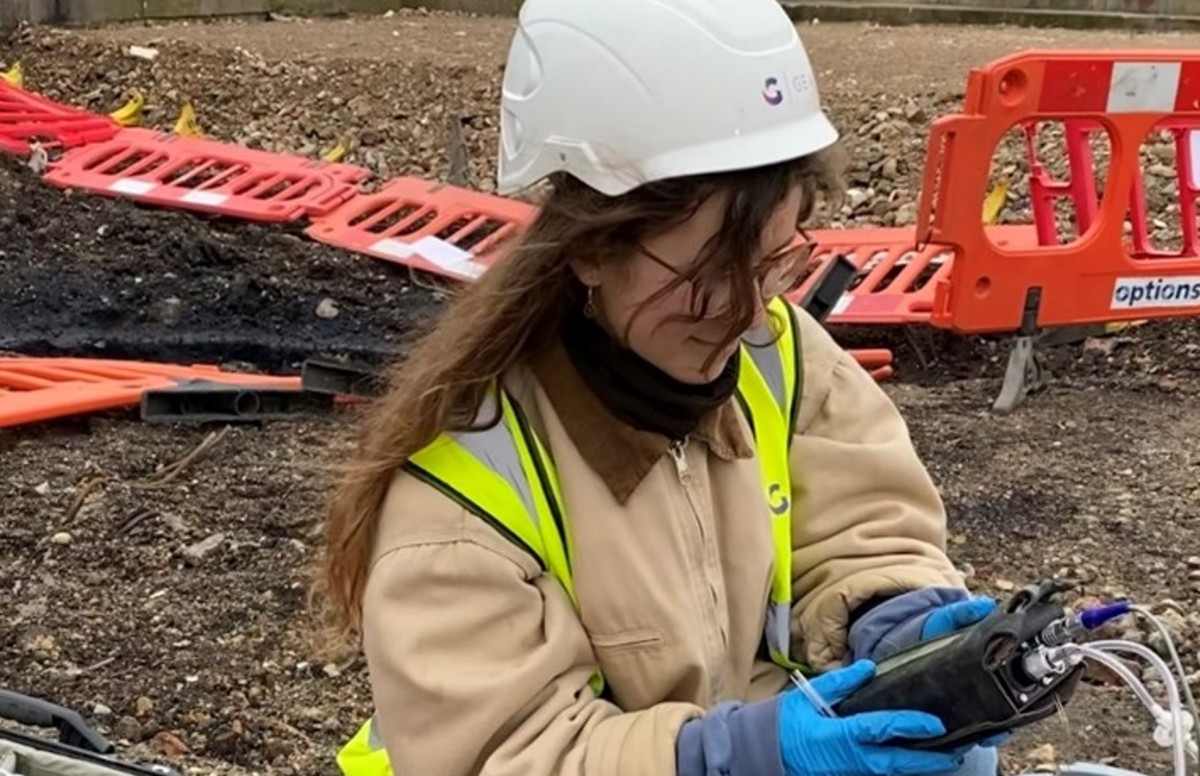The Definitive Guide to Geotheta
The Definitive Guide to Geotheta
Blog Article
What Does Geotheta Mean?
Table of ContentsFacts About Geotheta RevealedGetting My Geotheta To WorkGeotheta Can Be Fun For AnyoneThe Ultimate Guide To Geotheta
They collaborate with civil engineers, structural designers, architects, and various other professionals to incorporate geotechnical factors to consider right into the overall project design and building and construction procedure. This needs reliable team effort, sychronisation, and communication to make sure that the geotechnical elements align with the project objectives and meet regulative needs.Mining & Materials Engineering: Concepts of boring, infiltration rates, and variables impacting the choice of boring approach. Blasting methods in surface area and underground operations. Mechanical and constant approaches to fragmentation, consisting of longwall shearing and fullface boring.
Integrated analysis of fragmentation and comminution procedures. Supplied by: Mining & Materials Engineering.
Getting My Geotheta To Work
Bachelor's degree programs in civil, geotechnical, geological, and ecological engineering generally last four years and include general education programs in English, social scientific research, and the liberal arts, along with training courses in advanced mathematics, structural geology, and fluid mineralogy. (https://ameblo.jp/geotheta/entry-12862281966.html)
Geotechnical engineering includes the assessment of the soil and rock problems at a particular site, and their effects for the advancement of that website. As a lot of structures count on the ground for assistance, it is without shock that a detailed understanding of the ground conditions, and the viability of structure systems, are important to the long-term stability and performance of the building or framework.
Being experts in the investigation of geological formations and ground behavior, geotechnical designers execute scientific investigations and testing to comprehend the effect these geological developments might carry the layout and construction of building, civil and framework tasks. This proficiency is important for the layout and building and construction of structures, roads, tunnels, dams, bridges, and supply of water and sewer systems.
The geotechnical group at Douglas Allies consistently seek advice from with architects, design engineers, designers, and home builders to make suggestions on style and advancement proposals to ensure that the constructed frameworks are appropriately created for the ground conditions. The design of footing systems needs to take into consideration the weight of the structure, the capacity of the ground to support that weight with each other with movement resistances and effective construction.
The Single Strategy To Use For Geotheta
This task is substantially simplified by the usage of our Douglas Map geospatial platform which makes this details easily accessible in a very easy to make use of internet internet browser interface. A geotechnical designer will guide the boring of boreholes and examination pits to collect soil and other examples, and additionally evaluate surface features and ground exposures to form a geotechnical model of the subsurface conditions.
Depending on the task type and ground problems encountered, research laboratory testing may to name a few things examine toughness, compressibility, sensitivity and/or leaks in the structure of soil and rock examples. Hereafter information is gathered and looked at, the results are used for a geotechnical design of the website, which is generally offered as areas throughout the site.

A geotechnical investigation by nature can only examine the ground problems at the areas drilled or excavated. Natural variants in dirt and rock problems can take place throughout a website and in between examination locations. It is therefore good method that the geotechnical engineer be maintained throughout building and construction of the task to supply on-site confirmation that the ground problems encountered follow the expectations and advice offered in the geotechnical investigation report.
The 10-Minute Rule for Geotheta
Geotechnical designers utilize their thorough understanding of soil and rock to analyze danger and resolve problems on varied facilities projectsGeotechnical engineering is a specialist branch of civil design which checks out the behaviour of planet materials and the application of dirt and rock auto mechanics. Geotechnical Engineers. As a geotechnical designer, you will assess the physical, mechanical and chemical properties of soil and rock in order to design structures, maintaining structures and earthworks
Geotechnical design is closely connected to and overlaps with, both engineering geology and ground design - https://ianhammond2191.wixsite.com/my-site-2/post/unlocking-the-secrets-of-geotechnical-engineering-with-geotheta. It's feasible to specialise in geotechnics or benefit a geotechnical firm however be called an engineering rock hound or a ground engineer. As a geotechnical engineer, you'll require to: develop and maintain partnerships with customers and various other experts associated with the site, throughout each projectmaintain safety and security requirements on site bear in mind expense implications when you make recommendationsstudy geological maps and airborne photos from a series of sources and from various time periodsexamine building and construction prepares to see how viable they are based on your understanding of the siteinvestigate threats or geological dangers for the sitesearch for environmentally delicate features, such as land fill start to create accurate and expository ground modelsplan field investigationsdrill and evaluate samples of bedrock, soil, groundwater and added materials manage other specialists on sitesolve technical concerns as they arise, such as unanticipated structures at drill sitesmonitor conditions throughout and after building to make certain structures are steady in the brief and long termadding information collected on site to your first researchcreating geotechnical calculations, drawings, and two or three-dimensional computer system models interpreting the datamaking suggestions concerning the suggested usage of the website

Report this page